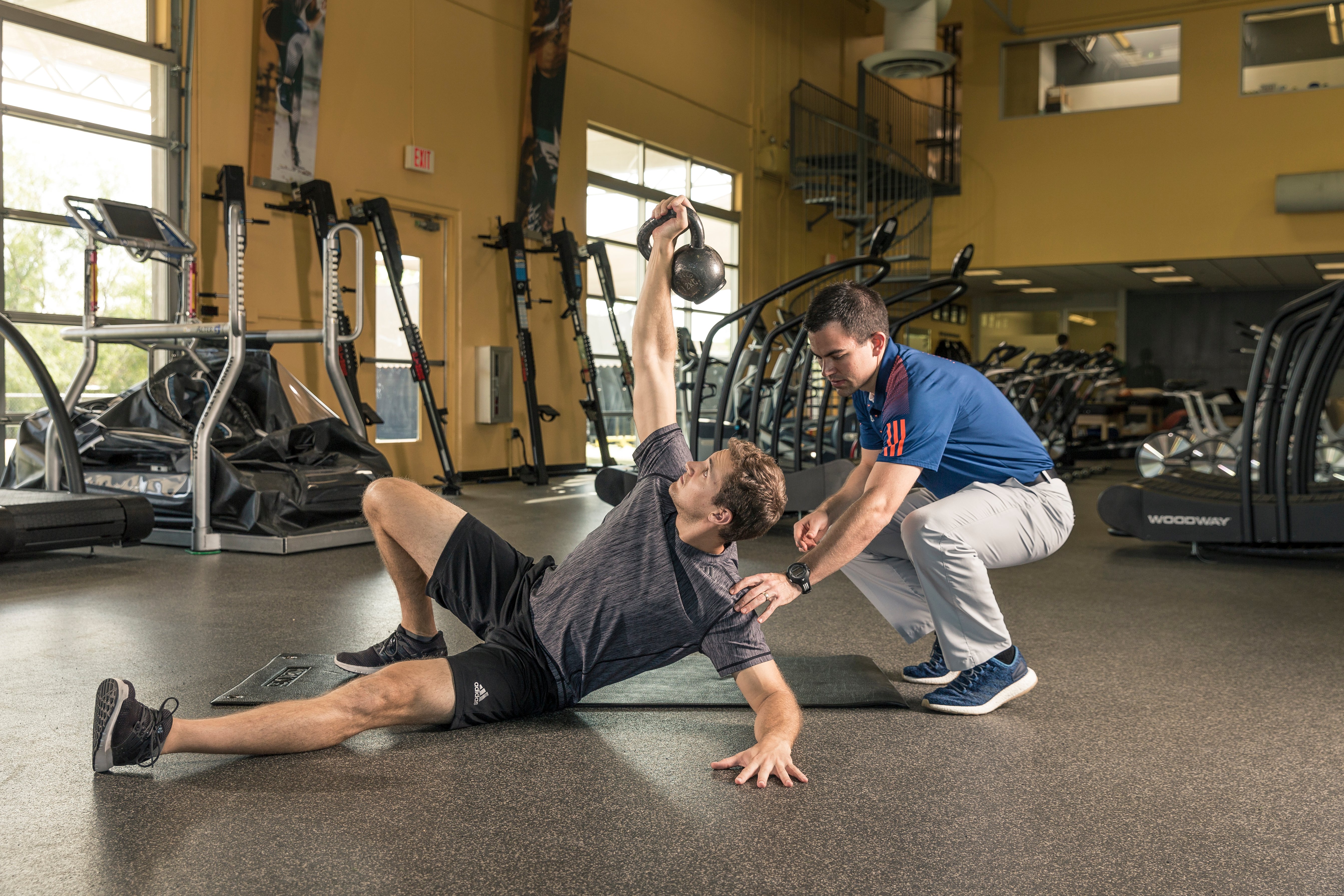Rethinking Linear Periodization for Optimal Client Performance
When it comes to strength training, there is a common belief that linear periodization is the key to success. However, James Dabbs, the owner of Dabbs Fitness in London, challenges this traditional approach. Drawing from his personal experience as a former professional soccer player and his research in the field, Dabbs advocates for a non-linear periodization approach. In this blog post, we will explore Dabbs' journey, his findings, and how he applies non-linear periodization at Dabbs Fitness.
Note: This post has been adapted from a more detailed article that appears in BridgeAthletic’s new ebook called “Raising the Bar: How World-Class Coaches Elevate Their Programming”. You can download the complete eBook for free to get tips and advice from experts at Exos, FMS, Hyperice, Results Fitness, and more.
Breaking Free from Linear Periodization
During his time as a soccer player, Dabbs sought ways to enhance his performance while managing the demanding schedule of games and training sessions. He realized that traditional linear periodization, with its focus on long-term cycles and structured off-seasons, didn't align with his circumstances. This led him to investigate alternative training methodologies.
"I grew up playing football in England. Our season lasted 10 or 11 months out of the year. We played two games per week — hard, 90-minute games — and ran 9 or 10 kilometers each game. It was grueling."
Inspired by the CrossFit training approach and the research of Brad Schoenfeld on hypertrophy, Dabbs began questioning the effectiveness of linear periodization.
He conducted a systematic review for his Master's dissertation, comparing the effectiveness of linear and non-linear periodization on maximal strength. Surprisingly, the results indicated that both approaches elicited strength gains in well-trained individuals, with no significant difference between them. This finding reinforced his belief that linear periodization might not be as effective as commonly assumed.
Embracing Non-Linear Periodization
Armed with this newfound knowledge, Dabbs launched his career as a personal trainer. He observed that the average client's life was often filled with ups and downs, including fluctuations in nutrition, sleep, and overall energy levels. Recognizing that most individuals already practiced a form of non-linear periodization based on their daily circumstances, Dabbs decided to embrace this natural variability in his programming at Dabbs Fitness.
"They’d come in and smash one workout, then show up sluggish and lethargic the next. It’s just life really — people get sick, people work crazy hours, people have relationship or family issues that put a lot of stress on them."
At Dabbs Fitness, linear periodization is intentionally avoided for clients. Instead, broad rep ranges are employed to empower individuals to train at loads and volumes that feel best for their bodies on any given day. The team trusts that these factors will naturally ebb and flow based on the clients' self-regulation over time, effectively creating a form of non-linear periodization.
The Power of Variety and Structure
While Dabbs Fitness maintains guardrails in terms of load and volume, they emphasize the importance of variety for sustained progress. Rather than imposing strict load or rep prescriptions, they trust that variety naturally arises through the clients' self-regulation. Their framework provides clients with a well-rounded training experience, targeting various aspects of fitness while allowing for adaptability and individualization.
"If you try to force someone into max strength work when their body and nervous system just isn’t up to it that week, they could easily hurt themselves or get frustrated with the training."
The effectiveness of this approach is supported by the data tracked through the Bridge platform, which demonstrates consistent strength improvements over extended periods of 4, 8, or 12 months. Additionally, clients appreciate the flexibility and variety inherent in the programming, which has positive psychological effects.
Dabbs Fitness believes that they can still be passionate about training clients with structure without force-feeding linear periodization and strict volume or load prescriptions.
Bridging the Gap
James Dabbs, the founder of Dabbs Fitness, challenges the conventional wisdom of linear periodization in strength training. Through his research and practical experience, he has found that non-linear periodization, which embraces the natural fluctuations in individuals' lives, can yield remarkable results.
By prioritizing exercise selection, structure, and individualization, Dabbs Fitness provides a sustainable approach to strength training that empowers clients to reach their mental and physical potential. So, the next time you start programming for a client, consider incorporating a non-linear periodization approach and have your clients enjoy the benefits of a more flexible and personalized training program.
About the Author

At Bridge, we are all athletes and coaches first. As athletes, our team has experienced everything from riding the pine on JV, to winning NCAA championships, to competing in the Olympic Games. As coaches, we have helped countless athletes reach their full potential, winning everything from age group section championships to Olympic Gold Medals.
Related Posts

Six Benefits of Exercise on Mental...
Exercise is not only vital for physical health but also plays a transformative role in mental...

4 Easy Steps to Launch and Sell a...
The holiday season offers a unique opportunity for personal trainers to reach more clients and...

4 Proven Offers to Attract Clients and...
Standing out in the competitive world of personal training and fitness coaching requires more than...


